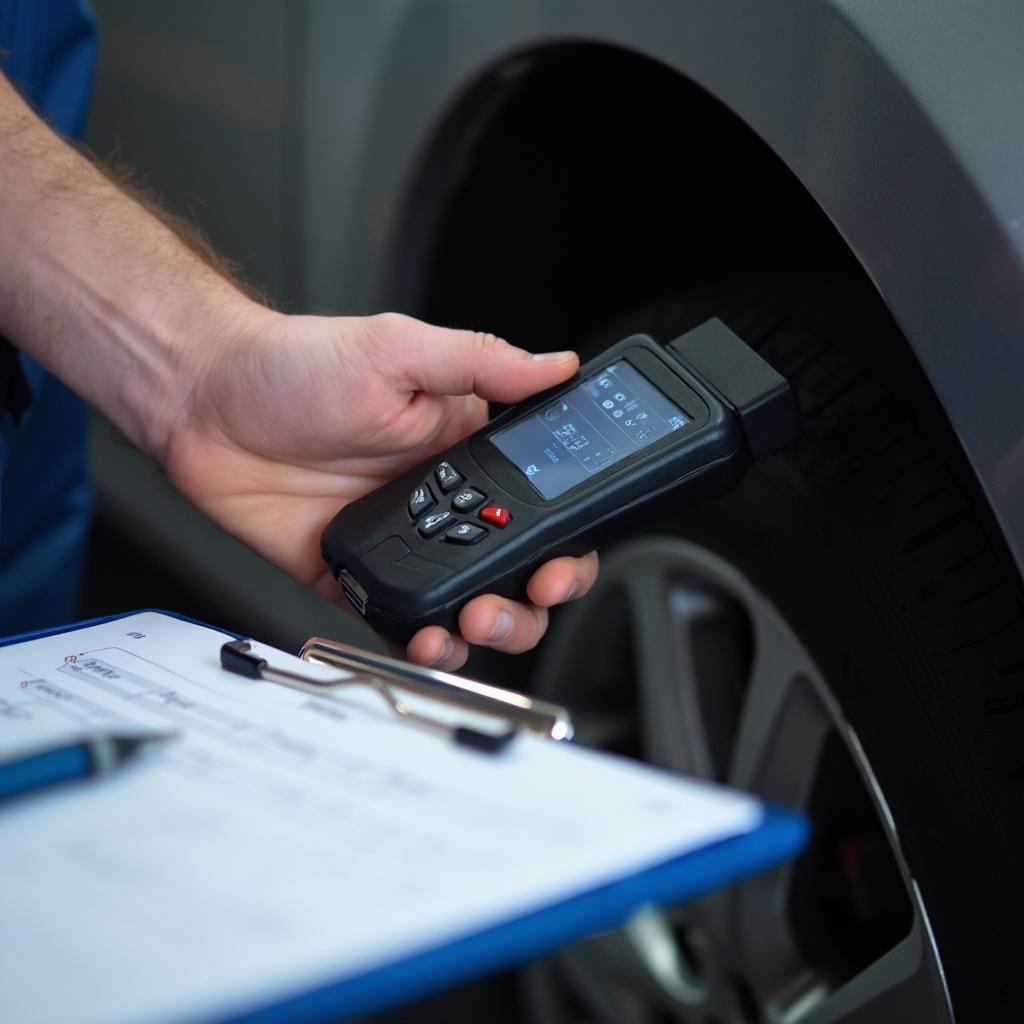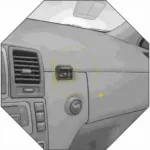Pennsylvania’s OBD2 inspection requirements are designed to ensure vehicles are running cleanly and efficiently. This guide will cover everything you need to know about these regulations, from understanding the testing process to preparing your vehicle for inspection.
Understanding Pennsylvania’s OBD2 Emission Inspection Program
Pennsylvania’s OBD2 emissions inspection program utilizes the vehicle’s onboard diagnostic system (OBD2) to check for emissions-related problems. This system constantly monitors your car’s performance and stores diagnostic trouble codes (DTCs) when it detects an issue. During an inspection, a technician connects a scan tool to your car’s OBD2 port, retrieving these codes to determine if your vehicle meets state emission standards. These regulations aim to reduce air pollution and ensure vehicles operate within acceptable environmental parameters. Are you curious about where to get your car inspected? Check out our guide on obd2 emission inspection stations in pa.
What the OBD2 Inspection Checks
The OBD2 inspection checks several key components and systems related to emissions:
- Catalyst Efficiency: The catalytic converter plays a crucial role in reducing harmful pollutants.
- Oxygen Sensor Performance: Oxygen sensors monitor the air/fuel mixture, ensuring optimal combustion.
- Evaporative System Integrity: This system prevents fuel vapors from escaping into the atmosphere.
- Exhaust Gas Recirculation (EGR) System: The EGR system helps control combustion temperatures and reduce nitrogen oxide emissions.
- Readiness Monitors: These monitors track the performance of various emission-related systems.
Vehicles Exempt from OBD2 Testing
Not all vehicles in Pennsylvania are required to undergo OBD2 testing. Certain older model year vehicles, diesel-powered vehicles weighing over 8,500 pounds, and vehicles with specific exemptions may be subject to alternative inspection methods. Understanding these exemptions is key to ensuring compliance.
Preparing Your Vehicle for an OBD2 Inspection
Proper preparation can significantly increase the chances of your vehicle passing the OBD2 inspection. Here’s a step-by-step guide:
- Check Engine Light: Ensure your check engine light is not illuminated. A lit check engine light is an automatic fail. If you’re having trouble connecting your iPhone to your OBD2 scanner, have a look at this article on obd2 bluetooth iphone uk.
- Regular Maintenance: Keep up with scheduled maintenance, including oil changes, spark plug replacements, and air filter replacements.
- Repair Known Issues: Address any known issues related to emissions, such as faulty oxygen sensors or a damaged catalytic converter.
- Drive Cycle Completion: Ensure your vehicle’s drive cycle is complete. This involves driving under specific conditions to allow the OBD2 system to monitor all emission-related components.
 Preparing Your Car for OBD2 Inspection
Preparing Your Car for OBD2 Inspection
What Happens If My Vehicle Fails the Inspection?
If your vehicle fails the OBD2 inspection, you’ll receive a report indicating the reason for failure. You’ll need to repair the identified problems and have the vehicle re-inspected. Sometimes, seemingly unrelated issues, like using an OBD1 ECU in an OBD2 car, can affect your inspection. Learn more about this compatibility challenge on our page about obd1 ecu in obd2 car.
Common Reasons for OBD2 Inspection Failure
- Faulty Oxygen Sensor: A malfunctioning oxygen sensor can disrupt the air/fuel mixture, leading to increased emissions.
- Damaged Catalytic Converter: A damaged catalytic converter can’t effectively convert harmful pollutants into less harmful substances.
- Evaporative System Leak: A leak in the evaporative system can allow fuel vapors to escape.
- Incomplete Drive Cycle: If the OBD2 system hasn’t completed its monitoring cycle, the vehicle may fail the inspection.
“Regular maintenance is the key to passing your OBD2 inspection,” says automotive expert, John Smith, ASE Certified Master Technician. “Addressing issues promptly and ensuring a complete drive cycle can save you time and money in the long run.”
Conclusion
Staying informed about Pennsylvania’s new OBD2 inspection requirements is essential for all vehicle owners. By understanding the process, preparing your vehicle properly, and addressing any issues promptly, you can ensure your vehicle complies with state regulations and contributes to a cleaner environment. For those in New York State, you might be interested in learning about the nys obd2 inspection waiver.
FAQ
- How often do I need an OBD2 inspection in PA? Annually.
- What if my car is older than 1996? Different rules may apply.
- How much does an OBD2 inspection cost? Fees vary by inspection station.
- Can I perform an OBD2 inspection myself? No, it must be done by a certified inspection station.
- What if my check engine light is on? You will automatically fail the inspection.
- What are OBD2 readiness monitors? They track the performance of emission systems.
- What is a drive cycle? A specific driving pattern to allow the OBD2 system to monitor all components.
For further assistance, please contact us via WhatsApp: +1(641)206-8880, Email: [email protected] or visit our office at 789 Elm Street, San Francisco, CA 94102, USA. Our customer support team is available 24/7.

